For the past eight days, Trisha and I have been living and working on a farm in England. This farm experience is the first of many we will be doing over the next few months, though most will be in Italy. After our experiences in Central America, this farm-stay has been quite a different and enjoyable change of pace. As I attempt to summarize this first stay, four words come to mind: tranquil, laborious, charming, and organic.
The first is tranquility and I think its significance is twofold. There is the tranquil feeling that comes from knowing that your on a farm, in the heart of England, surrounded by farmland and countryside, and many miles away from anything that resembles a big city. For me, it doesn’t get any more tranquil than that.
The second part of the tranquility was the peace and quiet of our farm (Stalland Farm) and its rural location. If you check on a map, the farm is located in the northeast of England, about 15 miles from the city of Norwich. Layered between the big and charming city of Norwich and the farm are green fields and small quant villages. Stalland farm is about three mile from the nearest village and is surrounded on all sides by other farms. All that can be heard when outside are the birds in the trees, an occasional passing tractor, and a few fighter jets screaming across the sky from an airforce base in Norwich. We have found it extremely easy to pass time away here with little thought to the normal pace of life. The nature of our work also creates a tranquil feeling, as tending to gardens and crops has a very calming effect. However the work has not been easy. This leads me to my next word.
Trisha and I have worked our tails off here since we arrived, which is why laborious aptly summarizes our experience. The farmer we worked for, Steve Mahoney, has lived on his farm for the past 30 years. Steve’s farm is classified as an organic bee farm and yields honey enough for a steady income. Beside the honey production (which we weren’t really involved with) there were a hundred other projects, from gardens to chicken sheds to general landscape. And Trisha and I worked on about all of them.
Our laborious day began at 9:00, where we worked on challenging tasks until a coffee break around 11:00. At 1:00 we ate lunch, worked for a few more hours, took a tea break at 3:00, and finished at 5:00 or so. Our tasks included digging ditches for potato plants, cutting what seemed like miles of hedges, cultivating future gardens, digging up grass to be used as compost, building housing for strawberries and tomatoes, and of course weeding. Typically with these types of farm exchanges, the workers labor for 5-6 hours. Obviously our friend Steve didn’t get that memo. But we haven’t minded. He is a very patient and informative person, and kept our work varied and enjoyable. Steve is keen on telling his workers exactly why they are doing a certain task and what importance it will play on the farm. At the end of the day, we found ourselves extremely tired, but satisfied with the work produced. Although Steve isn’t the most outwardly expressive type, we think he was content with out work.
I use charming as my next word to sum up our first farm experience, as so much around us is just that. To begin, the little villages tucked between the vast expanses of field are postcard perfect England. Each town has an old grey stone church in the center, surrounded by tombstones dating back well beyond what we consider old in our country. The houses radiate a cozy feeling with their tutor style architecture, smoking chimneys, and abundant gardens in front. There are also the little market stores, pubs, and fish and chips restaurants to round of the completeness of each village.
This charm has also extended to the farm itself. Its location in the middle of green fields, surrounded by weeping willows and various other attractive trees made for a perfect location. The farmhouse is two-stories, painted dark red on the outside, and has an additional barn outback. There is a conservatory for plants in the rear of the house and many spacious rooms inside. Trisha and I had our own room and bathroom in the second half of the house, while Steve lived in the first. We took all our meals together in his well-stocked kitchen. The kitchen rounded out the charming feel, as it has a wood-burning stove that not only provides heat for cooking, but also is the main heating source for the entire house. The stove is connected to wall radiators in every room.
My final word on our first farm-stay is organic. Stalland farm is an organic bee farm, but I think the organicness transcends all areas of the place. In particular the food we ate radiated organic. This was mainly apparent by the fact that most of what we ate was grown on the farm by Steve. He does not visit the grocery often and prefers to eat was he produces. Everything he grows of course is 100% organic. Our typical breakfast for example, was porridge (probably store-bought), coffee, and Steve’s homemade bread. Lunch was more homemade bread, cheese, and a variety of spreads either made on the farm or bought from organic wholesalers. Dinner varied a little more, but typically was potatoes and greens grown on the farm, along with bean or lentils in some delicious sauce. Occasionally we would have sausage or beef purchased on a nearby farm, which of course was also organic. I also think the general feel of the farm has an organic, natural feel to it. Everything that can be composted is composted, and used in the planting of crops. Natural and chemical free products are used in all facets on the farm, and references were often made to it in conversations with Steve.
The feeling to reuse was apparent everywhere too, as wooden shingles from a roof are now the perimeter of a garden. Old car tires resting on tin siding provide covering for the beds of recently planted root vegetables. The frames holding up the plastic sheeting covering the tomato plants are the sticks cut from the sprouting young trees on the side of the house. Almost everywhere you look, there is something that served a purpose at one point and is now serving some alternative purpose. Thus was the feeling on Stalland Farm.
As our experience on Stalland Farm ended on Thursday morning, Trisha and I found ourselves proud of our accomplishments, more knowledgeable of organic farming, a little sad to say goodbye to the farm, and excited for our next stay. Our next farm is only 15 minutes away and appears to be great so far. It will be a shorter experience than Steve’s farm, as we will be leaving for Italy next Wednesday, but I’m sure will be just as rich an experience.
Saturday, April 11, 2009
Subscribe to:
Post Comments (Atom)
About Us
Spain

Excursion to Toledo

The Toldeo Cathedral

....supposedly one of the most beautiful in all of Europe

The city (the former capital of Spain) is on top of a hill, surrounded by a stone wall


the narrow city streets were an adventure to walk on

lovely city streets...

The top of a mosque
The "Bullet Train"

This high speed train runs over 200 miles an hour! We traveled a distance of 100 miles in 30 minutes flat. Amazing.

Excited for our first trip outside of Madrid

Another typical plaza in the center of the city. As usual, late in the day all the folks gather together and sit and catch up on their days. Very pleasant!

I loved watching this sweet elderly man pacing the square. Looks like he might have benefited from drinking more milk though in his younger days!

Our first "Menu of the Dia." This is my 1st course of their famous gaspacho- served more pureed and smooth here than how we make it in CA...

a view from on top of the city


love the flowers and shadows
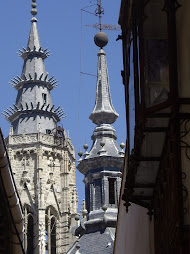
The Packing Nightmare!

We actually lived amongst this for several days!
Down to the last load...

Goodbye to our apartment... now we're homeless!


















































































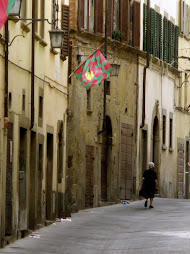















































































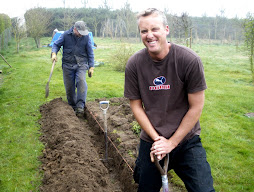
























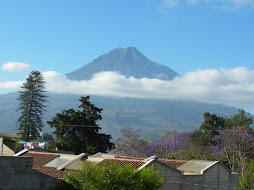









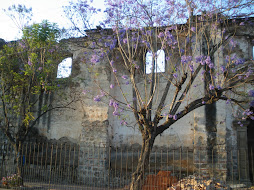


























































































































































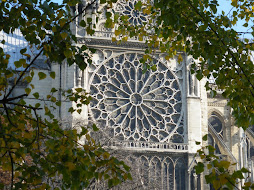





































































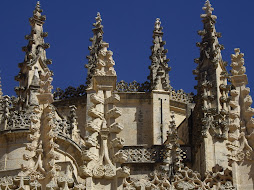









































No comments:
Post a Comment